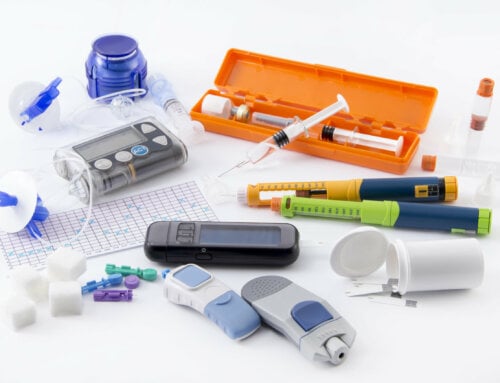All blood glucose meters are not created equal. Differences include meter size, speed, cost and the amount of the blood sample needed. Find out how to choose the right blood glucose meter for you.
- Blood glucose meters use a lancet to prick the skin and get a small blood sample from your finger. Alcohol wipes are included in your blood testing kit for cleansing to avoid contamination and infection. If available, soap and water is the best way to cleanse the skin.
- The blood sample obtained by a lancet is placed on to one of the glucose test strips. This sends data to the blood sugar monitor to determine your current blood sugar level. Beyond these basics, meters have a variety of other functions.
- The American Diabetes Association reports there are sixty blood glucose meters on the market. The first step toward choosing the right one is to know the terminology related to blood glucose meters. Memory refers to the number of results the meter will hold. Test time is the time it takes to see your blood sugar results after applying the blood drop to the strip. Micro liter is the volume measurement for the blood drop used.
- Blood glucose meters store the results of testing for a certain period of time in the memory. You should record your results separately in a log book to ensure you have them available for every medical appointment. Your doctor uses them to identify patterns and compare data. You may down load them as well.
- Daily use of a meter is not a substitute for HbA1c tests. Checking with a meter should help you make daily decisions about food intake and exercise. The HbA1 examines the affects of sugar in your blood over the past two to three months 24 hours a day. Besides using a blood glucose monitor, schedule regular HbA1c tests with your physician.
- The FDA reports factors involved when choosing a blood glucose meter include the amount of blood needed to test, pain of use, strip handling, testing speed and accuracy. Also consider the cost of the meter and test strips. Because test strips are purchased frequently they should be affordable. Find out if generic options are available. Try on line mail order companies for your supplies which can be cheaper than local pharmacies.
- Some people want specialized features such as the ability to transmit data to a computer, automatic timing, technical support or a large display screen to easily read the results. People with vision problems can get a meter with spoken instructions and results.
- Commonly used blood glucose meters include Accu-Chek Compact, Accu-Chek Aviva and Abbott FreeStyle Lite. Each one has certain features to make testing your blood sugar easier and more accurate.
- Abbott FreeStyle Lite takes 5 seconds to record your blood sugar results, stores 450 results and requires 0.3 ul of blood. The portable Accu-Chek compact stores 100 results, showing smaller models often store fewer results. The Accu-Check Aviva takes 5 seconds to show results, stores 500 results and requires 0.6 ul of blood. The same manufacturer often offers several options for meters.
There are many differences between blood glucose meters but they all perform the same basic function of giving you immediate blood sugar results. Ask for your doctor’s recommendation, check with your insurance plan or compare features to find the right one for you.






Leave A Comment